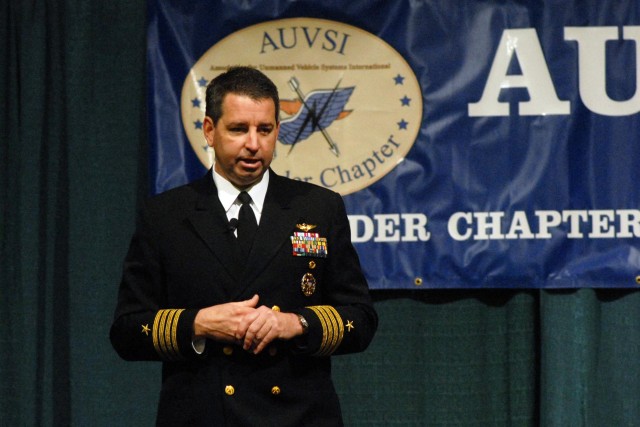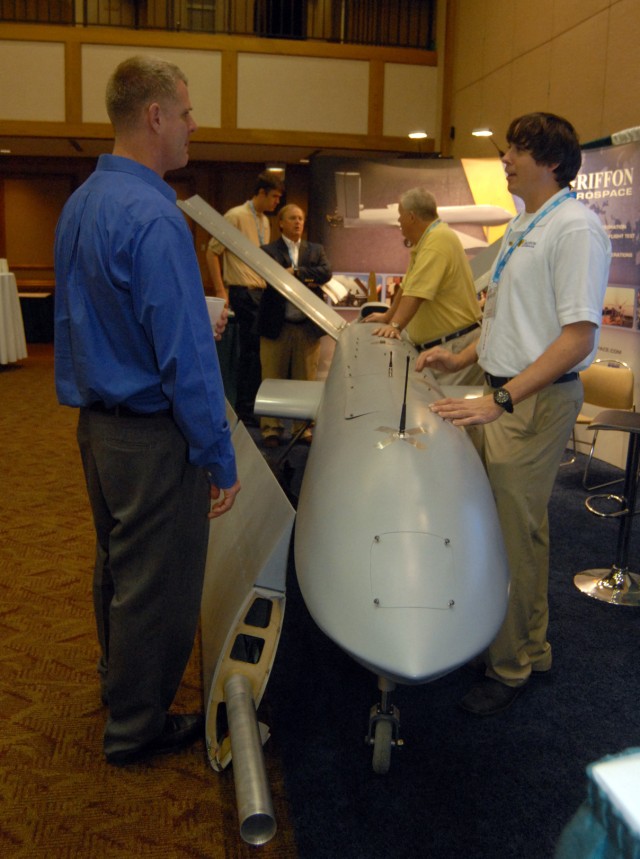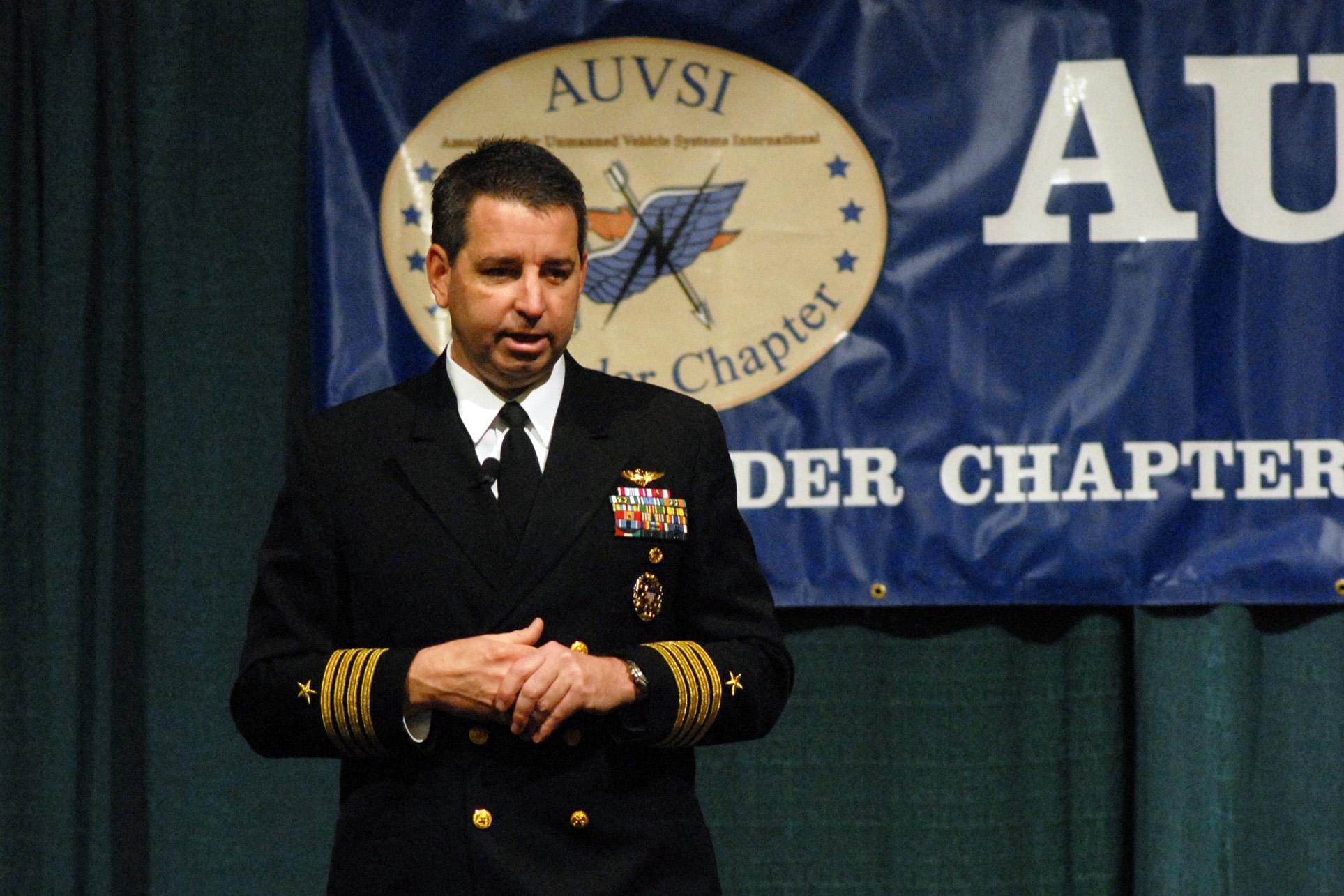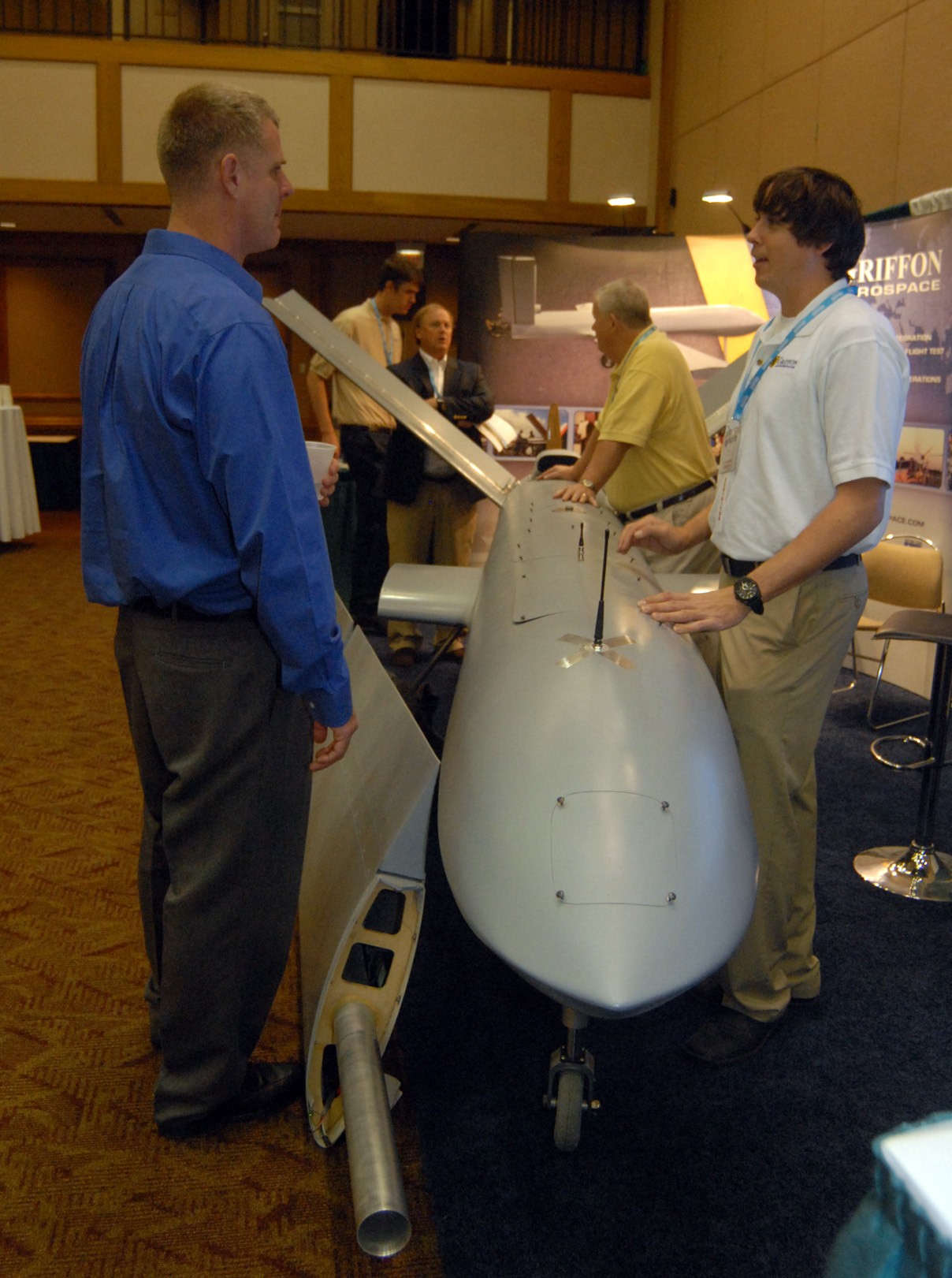REDSTONE ARSENAL, Ala.--The message came across loud and clear - unmanned aircraft systems are here to stay in the Department of Defense's joint forces fleet.
From keynote presenter Dr. Steve Messervy of the Space and Missile Defense Command/Army Forces Strategic Command to Navy Capt. Gregory McGuire of the Joint Unmanned Aircraft Systems Center of Excellence, the speakers at the Pathfinder Symposium sponsored by Pathfinder Chapter of the Association of Unmanned Systems International at the Von Braun Center on March 16-17 reviewed technologies and new initiatives that will grow the role of unmanned aircraft systems across the services. The theme of the symposium was Unmanned Systems - A Roadmap to the Future.
Messervy, deputy to the commander for research, development and acquisition at SMDC/ARSTRAT, has a 30-year career that has spanned from the beginnings of unmanned aircraft research to today's use of unmanned aircraft in theater. He recalled for his audience of nearly 300 military and industry representatives the early years of unmanned research.
"Over 20 years ago, I got a call to go to building so-and-so down by the river (on Redstone Arsenal). That meant I was going to buildings where we did special access programs, black programs and a bunch of military intelligence. They needed help getting this bird (Hunter) off the ground," Messervy said.
"Over 20 years ago, what we were all involved in now was relatively new not only from the technology point of view but also from CONOPS (Concept of Operations)."
He went on to review today's long list of unmanned aircraft systems, from the growing missions of the Army's Gray Eagle, Shadow and Raven to the fielding of the Air Force's Predator and the Navy's Fire-X and Fire Scout along with Germany's Euro Hawk and Luna.
SMDC/ARSTRAT's role in unmanned aircraft systems revolves around high-altitude efforts for surveillance and reconnaissance, including the HALE-D (High Altitude Long Endurance) airship, Hi-Sentinel 80 airship, Orcon Unmanned Aircraft System, Zephyr Unmanned Aircraft System and LEMV (Long Endurance Multi-Intelligence Vehicle) Demonstration.
Describing the future of unmanned aircraft systems as "very bright," Messervy said UASs have a lot of "growth potential for the future."
In that future, McGuire said UAS program experts must "work with the joint forces command and the different services to make the deployment of UAS more efficient (through development and training). UAS is here to stay and we need to make sure we're training our forces toward it."
The joint efforts in UAS have come together during the past couple years.
"In 2011, it's a much more structured plan and you can see how we have started influencing the training battlefield on different events," McGuire said.
One key factor in the future of unmanned aircraft systems and their use by the services involves national airspace integration, meaning the use of unmanned aircraft systems in the same space as manned aircraft systems. In this area, success will demand a joint approach, McGuire said.
"All services are going to the FAA (Federal Aviation Administration) independently," he said. "We need one voice for DoD. We have to standardize internally to a joint force and an agreement on how we're going to do this."
With more capabilities - such as ground-based sense and avoid systems that make an unmanned aircraft system "see" other systems and then redirect its flight to avoid collisions - enabling unmanned aircraft to fly in the same airspace as manned aircraft, DoD must have a joint standard on which to base its requests with the FAA, he said.
"What is DoD going to be doing in the terms of UAS in the national airspace' How many do we have flying now' In 2015' In 2020' In 2030' We don't know. But we are building a solution to get there. DoD is building standards and answering questions like 'Where are we going to put ground based sense and avoid''" McGuire said.
The Navy officer also said work needs to be done on establishing the requirements for the cargo unmanned aircraft system in response to operational and tactical needs.
And manpower and training issues must be addressed.
"We need a joint perspective on this," McGuire said. "We need to answer questions on how do we integrate UAS' How do we make it autonomous' It's kind of hard to design a program or a system if we don't know what autonomy is. We need to be real definite also when it comes to integration. All that stuff is still in the power point. It hasn't gotten off the slide."
McGuire said DoD needs definite answers on how to test unmanned and manned aircraft systems together.
"The joint UAS concept has developed and matured rapidly. But future environments will compel new approaches. How are we going to expand and compliment the capabilities we have and that we'll require'" he said.
In comments about the business of unmanned aircraft systems, Tim Owings, deputy project manager for Unmanned Aircraft Systems Project Office, said unmanned aircraft systems must be adapted for their environment (Iraq versus Afghanistan), joint relationships are needed to leverage the investment from one service to another, a trained force structure is needed to operate the systems, airspace issues must be worked out with manned systems and budgetary concerns need to be addressed.
Unmanned aircraft systems, he said, make Soldiers "more lethal, more survivable, more aware and more intelligent ... We are building a family of capabilities."
New frontiers present new challenges. Budget constraints slow growth in technology. The lack of a trained force structure can threaten the effectiveness of unmanned aircraft systems.
"How do we perform more and different missions, add more intelligence and capability, with the platforms we have and less people'" Owings asked.
The use of single command and control stations will reduce the number of required operators.
"Right now, it takes two Soldiers to operate an unmanned aircraft," he said. "We want to take that to one-to-one and even to one-to-four. We will need higher levels of autonomy in our unmanned aircraft systems if an operator controls multiple vehicles."
Decreasing the number of maintenance hours to maintain an unmanned aircraft also allows it to fly more time.
Systems must allow Soldiers to "make very quick tactical decisions, and provide the ability to engage smaller and lighter weapons," Owings said.
At the same time that new technologies are needed to grow unmanned aircraft systems missions, "we're being challenged in the department to find ways to drive down costs and then reinvest that cost in war fighter capability," he said.
Reducing unmanned aircraft crashes by 10 percent produces $10 million per year in savings. Reducing current production costs by 3 percent produces $15-20 million per year in savings. Decreasing overall sustainment costs by 10 percent produces $30 million per year in savings.
The forward movement in unmanned aircraft systems represents a move toward the next generation of systems, he said, adding "what we've done is first generation. We will go on to make these systems smarter and smarter."








Social Sharing